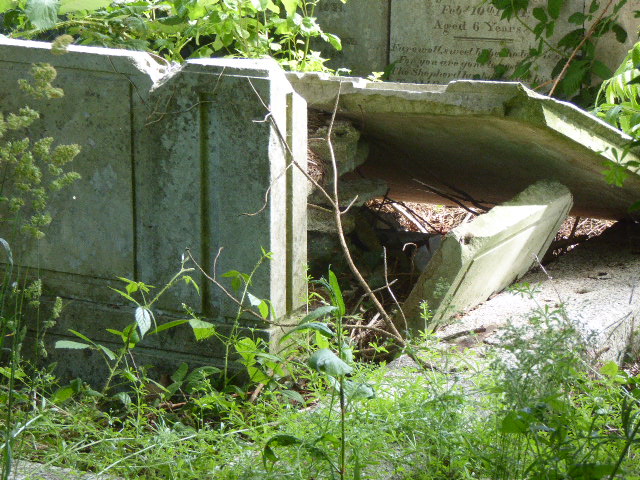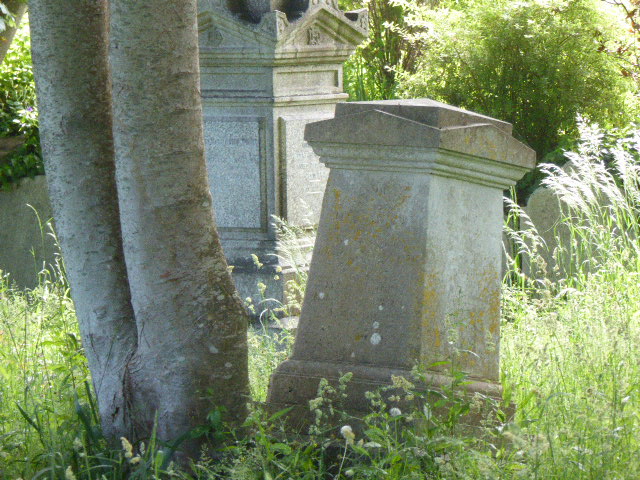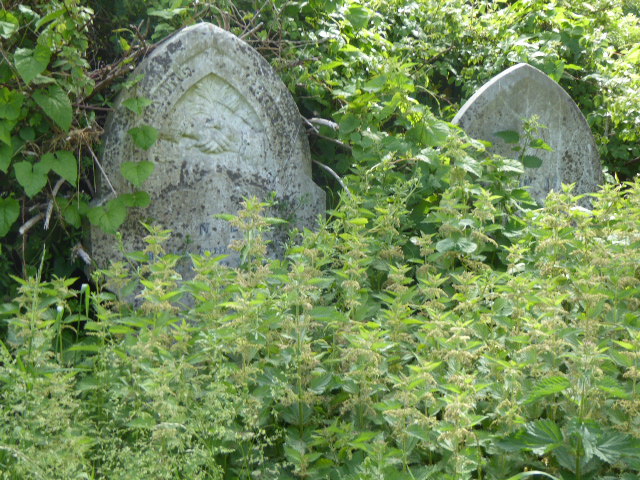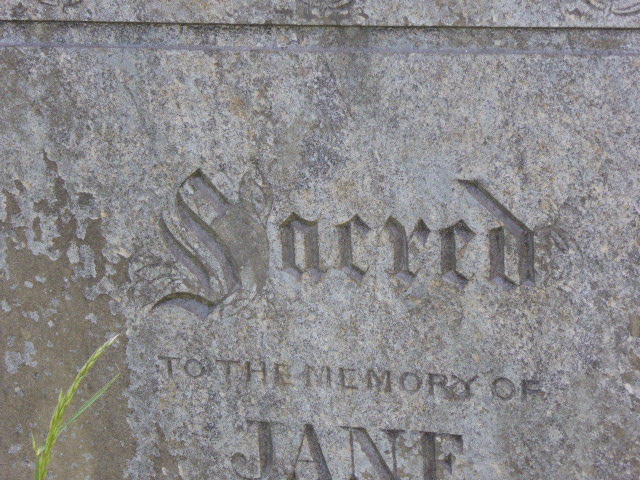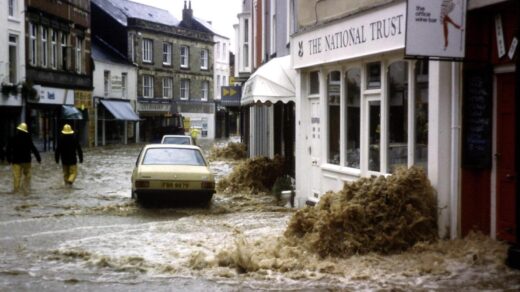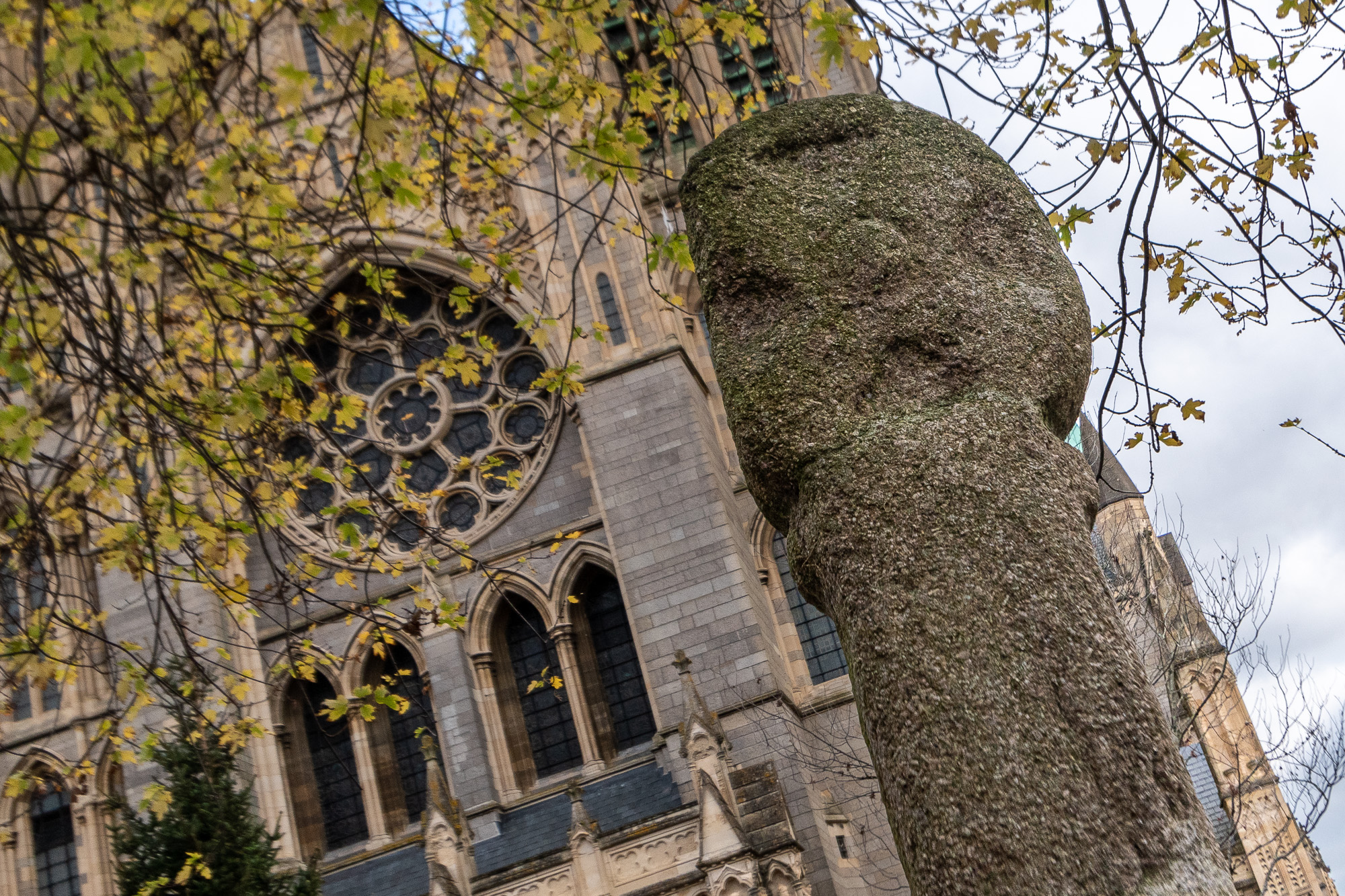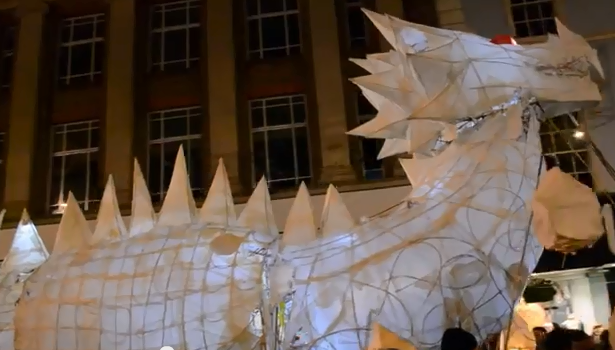St Mary’s Churchyard is full of bones of contention – it is part of our parish; we should look after it.
A good number of years ago a Mayor of Truro, Mrs Valerie Bennett, developed an acute civic anxiety about the condition of the St Mary’s Church Yard wall which runs adjacent to Kenwyn Hill. This led to Truro City Council deciding to hand over maintenance of St Mary’s Church Yard to the-then district Council, as was its legal right. One of the highlights of the work of Truro City Council’s Parks Departments major undertaking is its maintenance of Kenwyn Church Yard. Kenwyn is highly regarded by all those groups with an interest in such places, from family historians to naturalists. Most importantly, it is cherished and much visited by those who are bereaved, or descendants of those buried there.
Truro City Council also owns and maintains the Municipal Cemetery at St Clement’s Hill. Like Kenwyn, this is an active or open grave yard, whilst St Mary’s is ‘Closed’. This means that St Mary’s opens no new graves, but will inter where joint or family arrangements apply. Many graves in ‘Closed’ church yards are still tended by relatives or descendants. Some more famous incumbents, like Sir Hussey Vivian, are visited from time to time as a matter of homage.
Cornwall is one of those places in the British Isles, like Ireland and Scotland, which has experienced high levels of migration. This now means that family historians and researchers are regular visitors to grave yards, looking for precise locations of a ncestors. Such trade as these visitors bring to Cornwall is very valuable. Cornwall Family History Society is a relatively small organization which maintains a global reach due to the services it provides. Its headquarters are in Truro.
During various campaigns to strengthen local government in Cornwall, which culminated in the successful amalgamation of district and county councils into a unitary authority – Cornwall Council – much stress was laid upon how people identify with their place. The foremost unit of identity is the parish. Despite mathematical tinkering with parish boundaries for electoral purposes, most parishes in Cornwall are pretty much the same as when they emerged in the medieval period. They tend to be defined by topography and for many people throughout recorded history, the parish has been the place in which most lived their lives. It has a strong pull. Ronald Blythe wrote:
The parish as a unit of landscape is the most associative, contentious and distinctive personal region. It is venerated as the landscape of nativity and cursed as the landscape of limitation. Parish scenery pulls us this way and that. It is in control of us. Even the twist and turns of a city parish’s streets have their special private direction for the born parishioner. In the country, where one can often see an entire parish from boundary to boundary, one can also often see one’s entire life. It is comforting – and painful. For those who have remained in the same place a parish is not an address, it is somewhere you don’t need one. But if one moves away after only a few formative years there is no severing the umbilical link that feeds one with its particular parochialism. One of the great difficulties experienced by a priest is that his flock never really understands that their parish can never be his – not in anything like the same sense in which they possess it.’
A graveyard is one of the catalysts of the Parish. It is where the generations that have made it lie, past whom the new born, the newly wed, the celebrants of harvest, the buglers of remembrance, the lovers and the lonely all tread to and from the communion rail and the pew. It is a place of contemplation, of quietude and stillness, a place full of birdsong and rustling leaves, where nature and gardener greet each other gently and arrange a haven of attention and informality. Most of all, the grave yard is a place where bereaved and grieving people come to speak quietly with the ir dead ones whilst weeding, setting flowers, recreating a semblance of domesticity to ease the long silences of death.
For a person or family with generations of ancestors in this ground, the sense of possession, of belonging, of responsibility and duty defines that person as being a parishioner, a native, of belonging beyond title, beyond mortgage or civic office – it is an instinctive part of that person’s nature, of their being. This is a state that can only be experienced when an individual is in one’s native place – everybody has such a place – very many, who for one reason or another, don’t acknowledge or know of such a place in their life, often find it, often by accident, or as a result of travel – for them it is like coming home, and the realisation of that instinctive state of ‘parishioner’, of nativity, is profound and defining.
Many people live in places which are not their native parish. Whilst they might respect a native’s instinctive duty of belonging, their sense of possession which is beyond ownership, they may not recognise limitations or constraints, and may not sympathise in matters of choice or taste. They may objectify, or disrespect, or even, occasionally, mock or ridicule. When such attitudes to native sentiment occur and manifest themselves in, for instance, maintenance regimes for graveyards, then the level of distress which can and will be experienced by native parishioners is profound and often debilitating.
When Carrick DC took over St Mary’s church yard from Truro City Council its maintenance had to sit within schedules which included much other work, and be subject to public budgets which, most of the time, are in a state to reduction, shrinkage, cutting. Security lapsed. Grass cutting became spasmodic. Hedge maintenance and plant management disappeared. We saw soliciting, an attempted exhumation, damage to monuments and stones, and, most importantly, the water supply was cut off!
Truro City Council was helpless, and Carrick just shrugged its corporate shoulders. In 2010 the Churchyard passed to Cornwall Council. Its grounds maintenance contractor – CORMAC – now works to schedules set as part of the contractural arrangements. In recent times there has been much talk about ‘wilding’, about habitat and climate change. Grave yards have become a foc us for those people who advocate restoration of native species, of natural cycles, a less manicured approach which is said to encourage wild life. Nobody really disagrees until the demand becomes more radical.
To visit a graveyard and find monuments and stones piled against walls, broken and with virile small trees growing out of the graves causes those who have a native parishioner’s possessory instincts offence and distress.
In any culture the interaction between the living and the dead is one of the defining elements of that culture. This is as much true on Truro as it is in Cornwall. The clash between ecological zealotry, often advocated without acknowledgement that St Mary’s is a graveyard, a place where graces are tended by people who do not seek confrontation in their mournful practice, and who find themselves maligned in meetings, on social media, on the telephone and in personal verbal exchanges. The sense of being dispossessed, of being overruled in one’s own place, of losing the spiritual title to their natural home, is strong, debilitating, depressing and provocative.
There is, of course, a conciliation to be achieved. It lies partly in adopting the approach of a ‘living churchyard’ – which is howe Kenwyn is maintained and managed – very successfully. A graveyard needs care and attention, and a native empathy which is rarely on offer from a large corporate service provider with financial problems.
The resonance of offence generated by grass left uncut, sycamores displacing headstones, brambles and nettles preventing grave tenders from reaching their plots is coursing through Truro. People are angry and offended. They feel that those who have volunteered during pandemic lockdowns to tidy things up at St Mary’s have been cruelly abused by well-meaning but overly zealous advocates of ‘re-wilding’.
Cornwall Council, with volumes of environmental policy hemming them in, and the Equality Act, Health and Safety, and a corporate intellectual assumption of passive humanism as a liberal norm, is caught in the middle, between passion and ethics, between possessors of nativity and possessors of title, people who see ownership as an assertion of will rather than as a responsibility of stewardship. The Council can’t cope, and its contractor is torn between its client being indecisive and accidentally disrespectful, and its instinct as experienced grounds maintenance and graveyard managers.
I think the time has come for Truro City Council to reverse the decision it took during Mrs Bennett’s Mayoralty, and to seek transfer of St Mary’s Church Yard back to itself. The Yard sits very much within the City Council’s estate, with Hendra, Dreadnought, Waterfall Gardens and Victoria Park all very close-by, with Kenwyn Churchyard just up the road, and the newly acquired and much-loved Coosebean Woods just a stone’s throw away.
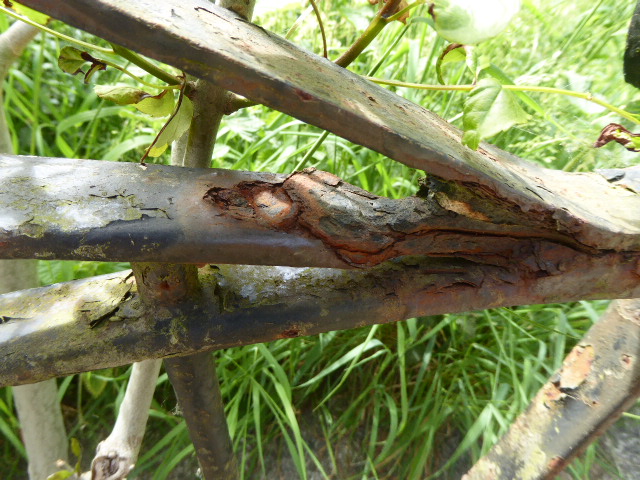
It’s not just a matter of long grass or intrusive sycamores. Many of the graves are in a state of disrepair. Stones are clustered disrespectfully. There are breakages, and graves are not all accessible. There is no water supply. Not even a bench to sit on, and the gates are rusty, lacking hinges and out of order.
Graveyards should be tended by their parish. Truro is at odds with itself over the harshly rude treatment of the lockdown volunteers. People are angry and feeling as if yet another aspect of what makes life worthwhile and resonant as Trurra Boys and Maids is slipping away, partly neglected; partly hi-jacked.
Is it time that St Mary’s Churchyard was handed back to Truro City Council so that it can be well managed in a balanced and considerate manner that blends a respectful environment for the dead with a living environment for the natural world – so that it can, as a place of repose and contemplation, nurture positive and good feelings of renewal and sympathy?


